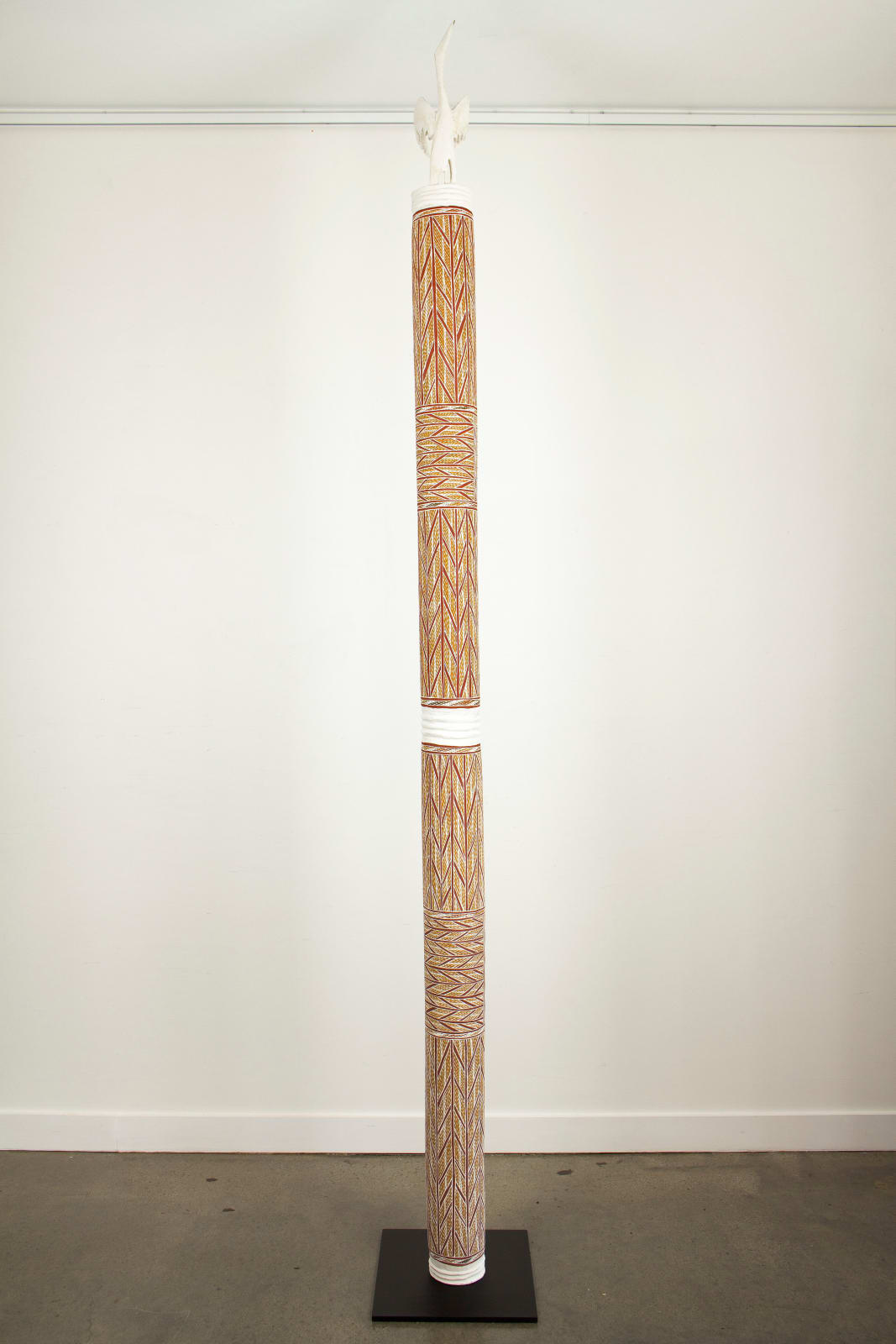Ŋoŋu Ganambarr Dhuwa, b. 02/08/1967
90 1/8 x 5 7/8 in
Further images
Ŋoŋu is the son of Manydjerri who is the eldest son of Mowarra Ganambarr who was born in 1917 and lived through the full range of changes in north east Arnhem Land from pre-European contact, the Second World War, Missionary times and the mining era. He was a member of the N.T.Special Reconnaisance Unit that saw service as a unit of the Australian Army comprised of traditional Yolŋu men in WWII. His work was collected by the anthropologists Berndt in 1947. His work is also held in the Australian National Gallery, the National Museum of Australia and the National Gallery of Victoria. He died in 2005. Gany’tjurr is the reef heron totemic to several of the Yirritja clan groups that inhabit the areas around Blue Mud Bay. Its actions during Ancestral times are sung by these Yirritja in shared manikay (sacred and ritual song) usually pertaining to the movement of the tides. It is the archetypal Yirritja male spear hunter and is danced that way. Yolŋu hunters mirror the strategy of this bird which is also enshrined in the dance. The bird crouches and creeps forward as the small rippling waves enter the shallows. The foam obscures the view of the prey. The hunter stands up as the waters still and recede and spears down to fix the fish with its beak. Ŋoŋu produced this larrakitj across Arnhem Bay from the Datiwuy homeland centre of Rorruwuy where he lives with his Waŋguri clan wife at Dhaliŋbuy.
Close to Rorruwuy, the Peter John River (named after a son of Donald Thompson) reaches the sea at a place named Wandawoi. The shark generically named Måna and more specifically named Bulmandji rested here on a sand bar to heal his wounds from a spearing received from the Yirritja hunter at Buckingham Bay.
This was also the residence of the power totem Måna for the Dåtiwuy clan group. Both were saltwater sharks and legend has it compatible according to kinship. However Bulmandji moved on, as players in epic creation journeys do, to the freshwaters of the Dhudi-Djapu homeland at Dhurruputjpi. The basis the Dåtiwuy clan design of this place is saltwater agitated into rough sea and foam by the thrashing of the sharks’ tail. Here the Datiwuy shark and its children are at home in the muddy waters of Arnhem Bay. A massive bay whose shores cannot be seen from one side to the other there is a narrow outlet and 7 metre twice daily tides. Fringed with mangroves and fed by large muddy rivers the water is rich and full of resource and turbid and turbulent.
Clan groups most closely associated with Måna are the Djapu, Djambarrpuyŋu and the Dåtiwuy clans. Mäna is sung and danced with spears at important ritual, sometimes the violent nature of the shark is enacted at Makarrata to settle dispute. Victims of the wrath of Datiwuy sharks only realise after the event. Once they have been injured the shark has already moved on unseen through the muddy water.









